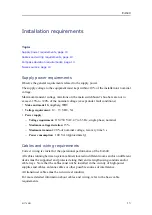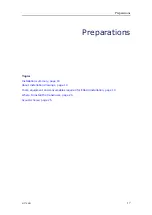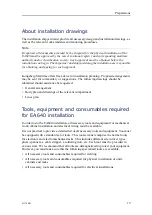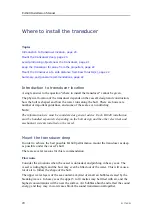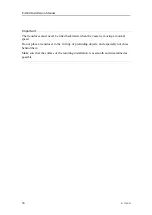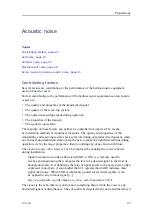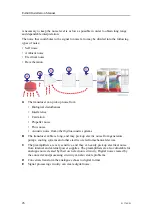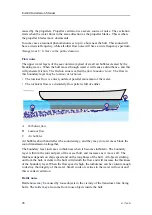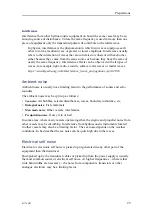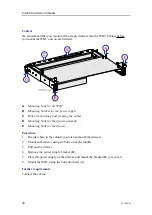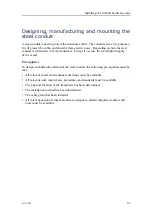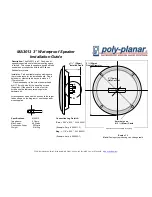
413764/B
27
Self noise
Any vessel equipped with a hydroacoustic system (for example echo sounder or sonar)
will produce more or less self noise.
There are many sources of such self noise. We will here go into some details in order to
analyse the different sources of self noise on a vessel and how they may influence upon
the noise level of the hydroacoustic instruments.
Machinery noise
The main contributor to machinery noise is usually the main engine on board the vessel.
The contribution from auxiliary machinery may, however, be considerable, especially if
it is in poor shape. The machinery noise can be transmitted to the transducer as:
• Structure-borne noise through the ship structure and the transducer mountings
• Water-borne noise through the hull into the water to the transducer
Electrical noise
Modern vessels are normally equipped with a lot of electric instruments such as
hydroacoustic systems, radars, navigation systems, and communication equipment. Any
electric instruments may in some cause electrical interference and noise. International
regulations and certifications are used to control and reduce this, but even these are
limited if the electrical systems are poorly installed and/or maintained.
Propeller noise
Propeller noise is often the main source of noise at higher vessel speeds. Variable pitch
propellers or fast moving propellers usually make more noise than fixed propellers or
slow moving propellers.
Propeller noise is usually water-borne. In some cases, however, shaft vibrations or
vibrations in the hull near the propeller may be structure-borne to the transducer. If a
propeller blade is damaged, this may increase the noise considerably.
Propeller cavitation is a severe source of noise. "Singing" propellers might be a source of
noise, which interferes at discrete frequencies. In some cases static discharge from the
rotating propeller shaft may be quite disturbing.
Cavitation
Cavitation is the formation of small air bubbles
close to the transducer face. The bubbles appear
because the local pressure becomes negative
during parts of the acoustic pressure cycles.
The cavitation threshold increases with the
hydrostatic pressure. The noise is made when
the bubbles implode.
Cavitation noise may appear near extruding
objects at higher speeds, but more often it is
Содержание EA640
Страница 62: ...62 413764 B 388697 WBT outline dimensions EA640 Installation Manual ...
Страница 63: ...413764 B 63 Drawing file ...
Страница 64: ...64 413764 B 400930 WBT Cabinet outline dimensions EA640 Installation Manual ...
Страница 65: ...413764 B 65 Drawing file ...
Страница 66: ...66 413764 B EA640 Installation Manual ...
Страница 67: ...413764 B 67 Drawing file ...
Страница 93: ......
Страница 94: ... 2018 Kongsberg Maritime ...

